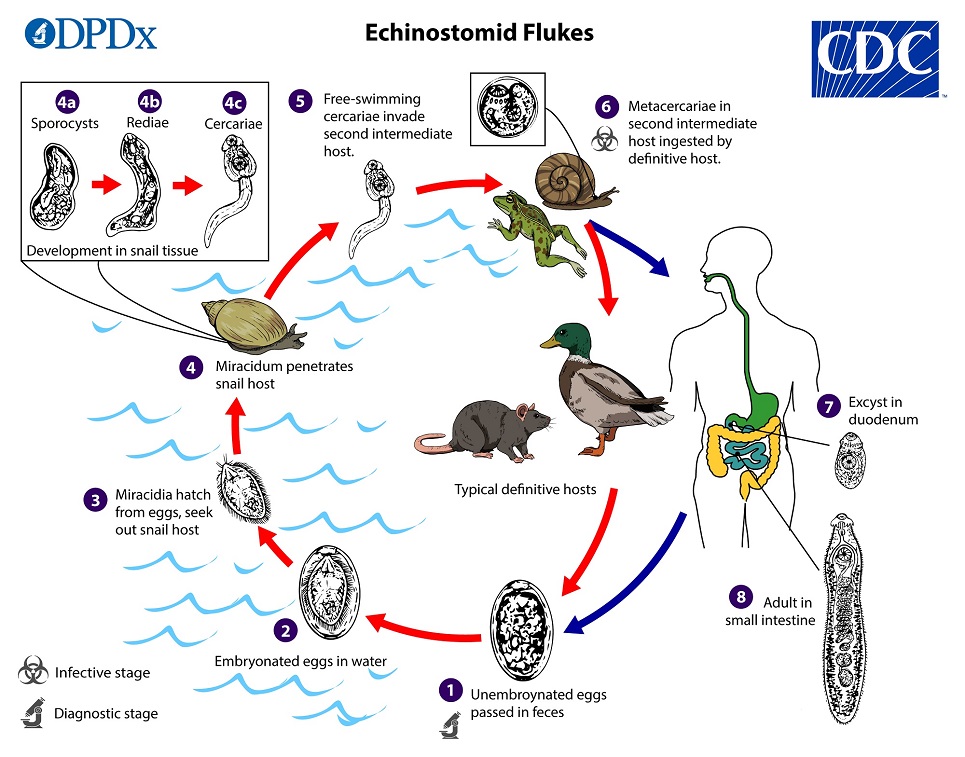
Echinostomiasis
[Echinostoma spp.]
Causal Agents
The trematode family Echinostomatidae includes numerous spiny-collared intestinal flukes known to infect humans. Infections are documented mostly from members of the genera Echinostoma (E. hortense, E. trivolvis, E. macrorchis, E. revolutum sensu lato, E. ilocanum, E. cinetorchis, E. echinatum [= lindoense]) and E. fujianensis). Sporadic infections with members of other echinostomid genera (including Echinoparyphium, Acanthoparyphium, Artyfechinostomum, Episthmium, Himasthla, Hypoderaeum, and Isthmiophora) are known. The taxonomy of this group at large is poorly understood and molecular data are scarce, thus genus/species names and assignments are liable to change in coming years.
Life Cycle
Like many trematodes, echinostomid flukes undergo a multi-host (indirect) life cycle . Unembryonated eggs are passed in feces of infected definitive hosts  and develop in water
and develop in water  . Miracidia usually take about 3 weeks to mature before hatching
. Miracidia usually take about 3 weeks to mature before hatching  , after which they swim freely and penetrate the first intermediate host, a snail
, after which they swim freely and penetrate the first intermediate host, a snail  . The intramolluscan stages include a sporocyst stage
. The intramolluscan stages include a sporocyst stage  , one or two generations of rediae
, one or two generations of rediae  , and cercariae
, and cercariae  , which are released from the snail. The cercariae may encyst as metacercariae within the same first intermediate host or leave the host and penetrate a new second intermediate host
, which are released from the snail. The cercariae may encyst as metacercariae within the same first intermediate host or leave the host and penetrate a new second intermediate host  . The definitive host becomes infected after eating metacercariae in infected second intermediate hosts
. The definitive host becomes infected after eating metacercariae in infected second intermediate hosts  . Metacercariae excyst in the duodenum
. Metacercariae excyst in the duodenum  and adults reside in the small intestine (for some species, occasionally in the bile ducts or large intestine)
and adults reside in the small intestine (for some species, occasionally in the bile ducts or large intestine)  .
.
Hosts
Many animals including birds, carnivores, rodents, and humans may serve as definitive hosts for various echinostomid species. The most frequently encountered zoonotic species, Echinostoma hortense and E. revolutum sensu lato, are usually associated with mammalian (rat, dog) and avian definitive hosts, respectively. The first intermediate host is always a snail (families Planorbidae, Lymnaeidae, and Bulinidae), and the major competent intermediate hosts vary by parasite species. Also depending on species, several animals may serve as the second intermediate host, including other snails, bivalves, fish, salamanders, and tadpoles.
Geographic Distribution
Echinostomes occur in wildlife and domestic animals worldwide, but human cases are seen most frequently in Southeast and East Asia. Incidence is highest in areas where undercooked or raw freshwater snails, clams, fish, or amphibians are eaten.
Clinical Presentation
Pathogenicity likely varies depending on the infecting species. Catarrhal inflammation often occurs due to the penetration of the sharp-spined collar into the intestinal mucosa, which creates ulcerative lesions. In heavy infections, gastrointestinal signs/symptoms may occur. Peripheral eosinophilia is usually present. A small number of fatal cases of Artyfechinostomum (= Echinostoma) malayanum, in which heavy worm burdens caused anemia, malnutrition, or intestinal perforation, have been reported.
Echinostomid egg in wet mounts.
Echinostomid eggs have a wide size range depending on the species and may range from 80–135 µm long by 55–80 µm wide. They have an inconspicuous operculum and the abopercular end is often thickened. The larger eggs are very similar to Fasciola and Fasciolopsis. Eggs are passed unembryonated in feces.
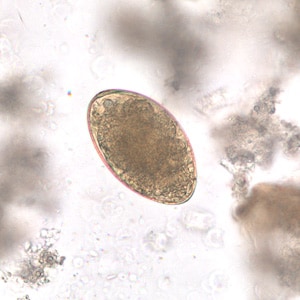
Echinostoma spp. adults.
Echinostomid flukes are much longer than wide and measure about 2–10 mm long by 1–2 mm wide, depending on the species. The oral sucker is surrounded by a collar of spines, the number of which varies among species. The oral and ventral suckers are located fairly close to one another. A single ovary is situated near the large, paired testes. Adults reside in the small intestine of the definitive host.
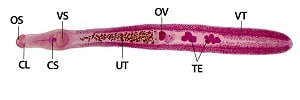
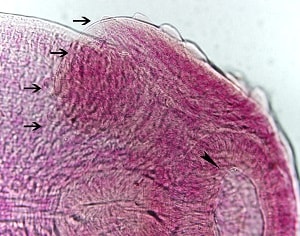
Echinostomid in tissue, stained with hematoxylin and eosin (H&E).
The following images were taken from an adult echinostomid removed from a colon polyp during routine colonoscopy.
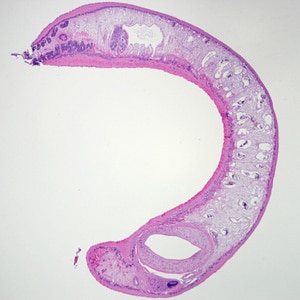
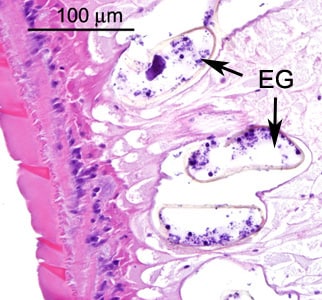
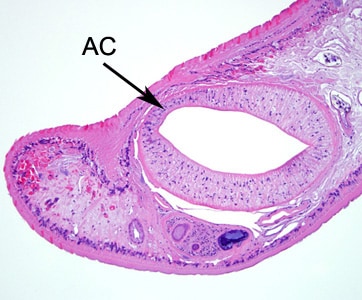
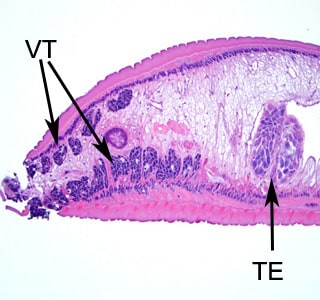
Intermediate hosts of Echinostomatidae
Like all trematodes, echinostomids require a snail as a first intermediate host. The second intermediate host may also be a snail, sometimes the same individual snail that served as the first intermediate host. Due to the large geographic distribution of echinostomes, and the many species present, there are many species of snails that may serve as first or second intermediate hosts. Other second intermediate hosts include bivalves, fish, salamanders, and tadpoles.
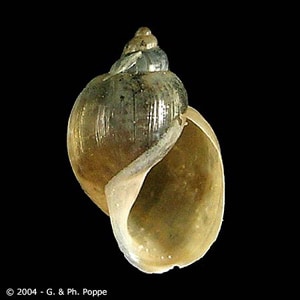
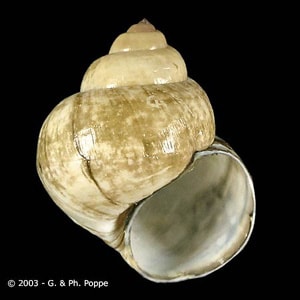
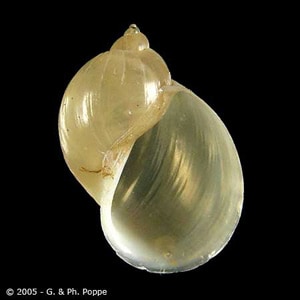
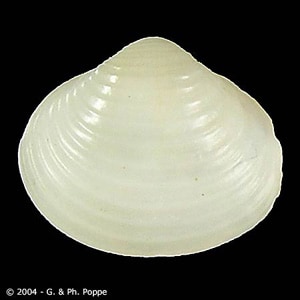
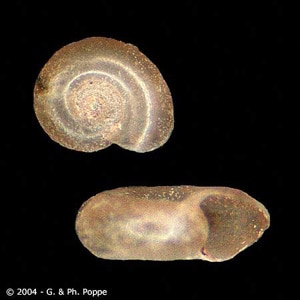
Laboratory Diagnosis
Diagnosis is based on microscopic identification of eggs in the stool. Because the eggs are large, careful measurements must be taken to avoid confusion with the eggs of Fasciola, Fasciolopsis, and Gastrodiscoides. Genus- and species-level identification cannot be done based on egg morphology and adults are needed for a definitive diagnosis.
Morphology
More on: Morphologic comparisons with other intestinal parasites
Laboratory Safety
Standard precautions for the processing of stool samples apply . Echinostomid eggs are not infectious to humans.
Suggested Reading
Sah, R., Khadka, S., Hamal, R. and Poudyal, S., 2018. Human echinostomiasis: a case report. BMC Research Notes, 11 (1), p.17.
Toledo, R. and Esteban, J.G., 2016. An update on human echinostomiasis. Transactions of The Royal Society of Tropical Medicine and Hygiene, 110 (1), pp.37–45.
DPDx is an educational resource designed for health professionals and laboratory scientists. For an overview including prevention, control, and treatment visit www.cdc.gov/parasites/.
